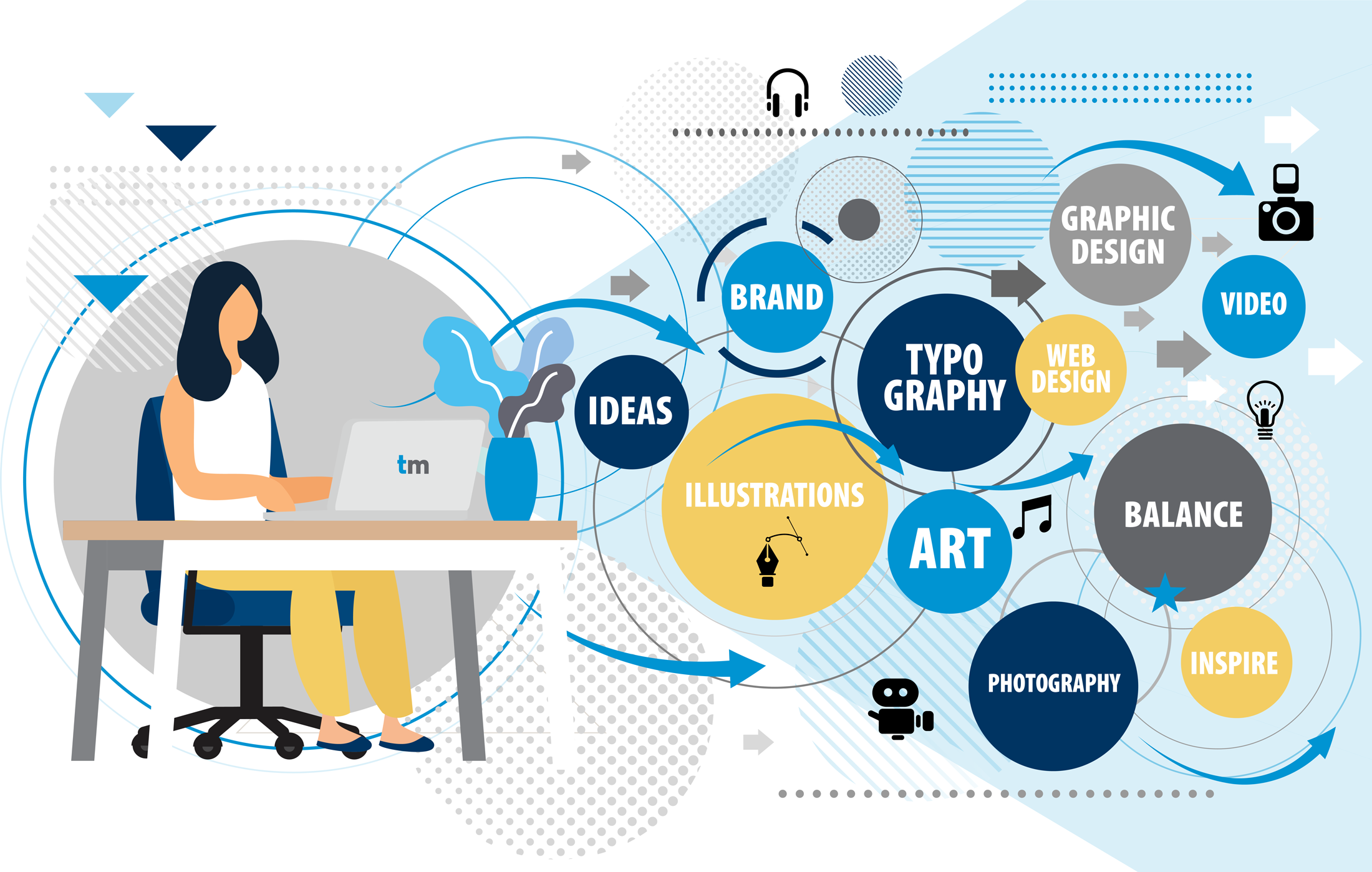The Power of Visual Storytelling: graphics and Branding
In today’s visually-driven world, graphics and branding are no longer just aesthetic considerations; they are fundamental to a company’s success. They are the silent storytellers, the first impression, and the enduring memory that shapes how consumers perceive and interact with a brand. This article delves into the intricate relationship between graphics and branding, exploring how they work together to create a powerful and lasting brand identity.
Defining the Dynamic Duo: Graphics and Branding
Branding encompasses all aspects of a company’s identity – its values, mission, personality, and promise to its customers. It’s the intangible essence that sets a business apart from its competitors. Graphics, on the other hand, are the visual elements used to communicate that brand identity. Think logos, color palettes, typography, imagery, and even the layout of marketing materials. They are the tangible representations of the brand’s abstract qualities.

The Symbiotic Relationship: How Graphics Support Branding
Graphics play a crucial role in bringing a brand to life. They translate the abstract concept of a brand into a concrete and relatable form. Here’s how:
1. Creating a Visual Identity: The Foundation of Recognition
A consistent visual identity is the cornerstone of effective branding. It provides a recognizable and cohesive look and feel across all platforms, from business cards to websites. Graphics are instrumental in establishing this visual identity. A well-designed logo, for instance, serves as the visual anchor of the brand, instantly recognizable and memorable. Consistent use of color palettes and typography further reinforces this identity, creating a unified brand experience.

2. Communicating Brand Values: Beyond the Visual
Graphics can communicate a brand’s values and personality without uttering a single word. A minimalist logo might suggest sophistication and efficiency, while a playful and colorful design could convey creativity and fun. The choice of imagery also plays a significant role. Photographs of happy customers can evoke feelings of trust and community, while abstract art can suggest innovation and forward-thinking.
3. Building Brand Recognition: The Power of Consistency
Consistency is key to building brand recognition. When a brand uses the same graphics across all its marketing materials, consumers begin to associate those visuals with the brand. This familiarity leads to recognition, which in turn fosters trust and loyalty. Imagine seeing a specific shade of red and instantly thinking of a particular soft drink brand. That’s the power of consistent visual branding.
4. Enhancing Brand Recall: Making a Lasting Impression
Graphics can significantly improve brand recall. Visuals are processed more quickly and efficiently than text, making them more memorable. A striking logo or a visually compelling advertisement can leave a lasting impression on consumers, increasing the likelihood that they will remember the brand in the future.
5. Differentiating from Competitors: Standing Out in the Crowd
In a crowded marketplace, it’s crucial to stand out from the competition. Graphics can help differentiate a brand by creating a unique and distinctive visual identity. A well-designed logo and a carefully curated visual style can set a brand apart, making it more easily identifiable and memorable.
6. Creating Emotional Connections: Resonating with the Audience
Graphics can evoke emotions and create connections with consumers on a deeper level. A powerful image can tell a story, inspire action, or create a sense of belonging. By carefully selecting and using graphics, brands can connect with their target audience on an emotional level, fostering brand loyalty and advocacy.
7. Driving Engagement: Capturing Attention
In today’s fast-paced digital world, capturing attention is a constant challenge. Visually appealing graphics can help cut through the noise and grab the attention of potential customers. Whether it’s a captivating social media post or a visually stunning website, graphics can play a crucial role in driving engagement and attracting new customers.
The Elements of Effective Graphic Branding
Creating effective graphic branding requires careful consideration of several key elements:
1. Logo Design: The Face of the Brand
The logo is arguably the most important element of a brand’s visual identity. It’s the visual representation of the brand’s essence and should be memorable, scalable, and versatile. A well-designed logo can communicate the brand’s values, personality, and mission in a single, powerful image.
2. Color Palette: Setting the Mood
Colors have a powerful impact on human emotions and can be used strategically to convey a brand’s personality. For example, blue often represents trust and stability, while red can evoke excitement and energy. Choosing the right color palette is crucial for creating the desired emotional connection with the target audience.
3. Typography: The Voice of the Brand
Typography plays a significant role in shaping brand perception. The choice of font can convey a brand’s personality, from classic and elegant to modern and playful. Consistency in typography across all marketing materials is essential for maintaining a cohesive brand identity.
4. Imagery: Telling the Brand Story
Imagery, including photographs, illustrations, and icons, can be used to tell the brand story and connect with the target audience on an emotional level. The style of imagery should be consistent with the overall brand aesthetic and should reflect the brand’s values and personality.
5. Layout and Composition: Creating Visual Harmony
The layout and composition of marketing materials play a crucial role in how the brand is perceived. A well-designed layout can create a sense of balance and harmony, making the brand appear professional and trustworthy.
6. Brand Guidelines: Maintaining Consistency
Brand guidelines are essential for ensuring consistency in the use of graphics across all platforms. These guidelines outline the rules for using the logo, color palette, typography, and other visual elements, ensuring that the brand is presented consistently and professionally.
The Importance of Professional Graphic Design
While some businesses may attempt to create their own graphics, hiring a professional graphic designer is often the best investment. Professional designers have the expertise and experience to create visually compelling and effective graphics that align with the brand’s overall strategy. They understand the principles of design, color theory, typography, and layout, and can create graphics that are not only aesthetically pleasing but also strategically designed to achieve the desired results.
Conclusion: Investing in Visual Storytelling
In conclusion, graphics and branding are inextricably linked. Graphics are the visual language of a brand, communicating its values, personality, and mission to the world. Investing in professional graphic design is an investment in the brand’s future. By creating a strong and consistent visual identity, businesses can build brand recognition, enhance brand recall, differentiate themselves from competitors, and create lasting emotional connections with their target audience. In the visually-driven world we live in, the power of visual storytelling cannot be overstated. It is the key to capturing attention, building trust, and ultimately, achieving business success.
graphics and branding
